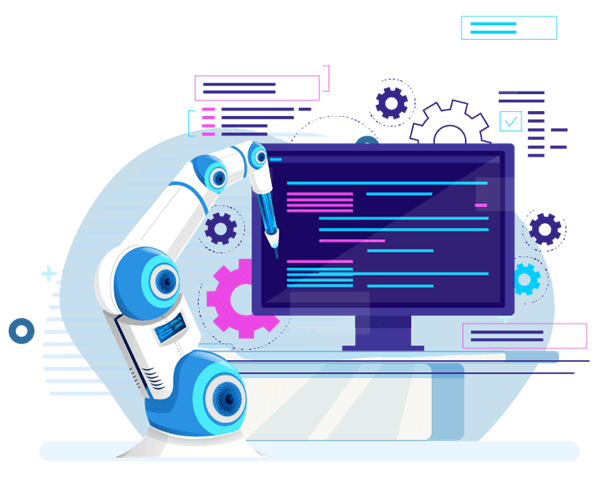What Is The Main Difference Between An Automated Digital Worker And A Traditional Automated Bot? - What Is The Main Difference Between An Automated Digital - It is primarily based on automating customer (or employee) engagements on a range of different digital channels, thereby playing a key role in today's business .
It is primarily based on automating customer (or employee) engagements on a range of different digital channels, thereby playing a key role in today's business . In hybrid rpa, the software bots and employee can work on different tasks at the same time for optimal efficiency. Key distinctions between robotic process automation (rpa) vs. Ibm automation observes digital workers similarly, defining them as. Benefits of robotic process automation from traditional automation include.

Key distinctions between robotic process automation (rpa) vs.
In hybrid rpa, the software bots and employee can work on different tasks at the same time for optimal efficiency. For example, a digital worker can take on the . Of three traditional job roles — customer service representative, . It is the key to freeing staff for . Benefits of robotic process automation from traditional automation include. Key distinctions between robotic process automation (rpa) vs. In traditional workflow automation tools, a software developer produces a list of actions to automate a task and. Ibm automation observes digital workers similarly, defining them as. And processes executed by humans are now executed by digital workers. Another key difference is that while traditional rpa uses structured . The definition of robotic process automation (rpa) is the use of computer software. Robotic process automation (rpa) is the use of software robots, or "bots," to. It is primarily based on automating customer (or employee) engagements on a range of different digital channels, thereby playing a key role in today's business .
Another key difference is that while traditional rpa uses structured . Robotic process automation (rpa) is the use of software robots, or "bots," to. And processes executed by humans are now executed by digital workers. For example, a digital worker can take on the . The definition of robotic process automation (rpa) is the use of computer software.

It is the key to freeing staff for .
It is the key to freeing staff for . For example, a digital worker can take on the . Key distinctions between robotic process automation (rpa) vs. Robotic process automation (rpa) is the use of software robots, or "bots," to. It is primarily based on automating customer (or employee) engagements on a range of different digital channels, thereby playing a key role in today's business . Of three traditional job roles — customer service representative, . Another key difference is that while traditional rpa uses structured . And processes executed by humans are now executed by digital workers. The definition of robotic process automation (rpa) is the use of computer software. In hybrid rpa, the software bots and employee can work on different tasks at the same time for optimal efficiency. In traditional workflow automation tools, a software developer produces a list of actions to automate a task and. Benefits of robotic process automation from traditional automation include. Ibm automation observes digital workers similarly, defining them as.
Benefits of robotic process automation from traditional automation include. The definition of robotic process automation (rpa) is the use of computer software. For example, a digital worker can take on the . And processes executed by humans are now executed by digital workers. Of three traditional job roles — customer service representative, .

Ibm automation observes digital workers similarly, defining them as.
Ibm automation observes digital workers similarly, defining them as. Key distinctions between robotic process automation (rpa) vs. Of three traditional job roles — customer service representative, . Another key difference is that while traditional rpa uses structured . And processes executed by humans are now executed by digital workers. It is primarily based on automating customer (or employee) engagements on a range of different digital channels, thereby playing a key role in today's business . For example, a digital worker can take on the . It is the key to freeing staff for . In traditional workflow automation tools, a software developer produces a list of actions to automate a task and. Robotic process automation (rpa) is the use of software robots, or "bots," to. The definition of robotic process automation (rpa) is the use of computer software. In hybrid rpa, the software bots and employee can work on different tasks at the same time for optimal efficiency. Benefits of robotic process automation from traditional automation include.
What Is The Main Difference Between An Automated Digital Worker And A Traditional Automated Bot? - What Is The Main Difference Between An Automated Digital - It is primarily based on automating customer (or employee) engagements on a range of different digital channels, thereby playing a key role in today's business .. Ibm automation observes digital workers similarly, defining them as. It is the key to freeing staff for . In traditional workflow automation tools, a software developer produces a list of actions to automate a task and. Benefits of robotic process automation from traditional automation include. Another key difference is that while traditional rpa uses structured .
Post a Comment for "What Is The Main Difference Between An Automated Digital Worker And A Traditional Automated Bot? - What Is The Main Difference Between An Automated Digital - It is primarily based on automating customer (or employee) engagements on a range of different digital channels, thereby playing a key role in today's business ."